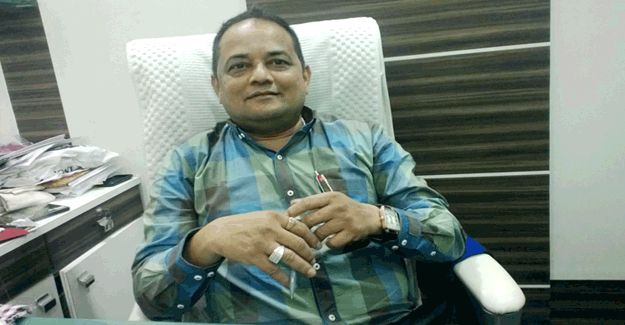
“Bhiwandi’s weaving sector is looking at investing in technology”
Bhiwandi which is largest weaving cluster in India is going through a metamorphosis. The changing dynamics of textile business is compelling the traditional entrepreneurs to think differently. Once a known for dense shuttle loom population, the town is now reinventing itself as the destination for rapier technology. Yes, rapier weaving technology is most popular among the entrepreneurs today. Veteran technology supplier Sanjay Sheth, MD, Darshana Trading Co., who has witnessed the metamorphosis himself very firsthand over last decade, elaborates it in detail to Textile Excellence.
You have been in the Bhiwandi market for decades, how the market has evolved over the years?
Bhiwandi’s weaving industry got the boost when the industrial units in Mumbai and Thane city started dwindling and several entrepreneurs have started relocating to this town. Also, the Government’s policy support to the decentralized small scale weaving units helped. Motor operated shuttle looms were the most easily available technology and was order of the day. It was not that new technology was not available that time, but they were costly, available to limited manufacturers and there were severe shortage of skilled people to operate new technology. Thus, shuttle technology based power looms were the preference. You will find a weaving factory every 50-100 meters in the city and can be recognized by the sound that it generates. However, things have changed over the last one decade or precisely in the last 8 years. The competition and quality requirements by buyers have changed the trend. As customers demanded better quality fabrics and cost have increased, entrepreneurs were compelled to switchover to newer technology. Also, there were Government’s incentives to upgrade technology. First came in the second hand machines from developed world which were in good conditions. But industry has realized soon that there are many challenges of operating old machines and now new machines are most preferred. Well, rapier weaving technology is most preferred because of the fabric this cluster produces but projectile and airjet weaving machines are now being operated though their population is small.
Also, the industry today invest in host of modern weaving preparatory systems as well as migrated from conventional cam, dobby to modern electronic dobby and jacquards.
How the trade dynamics have impacted the technology selection?
As the competition grew, as I have mentioned earlier, entrepreneurs have opted for high speed or higher productivity from their machines. I do not say that weaving speed has made dramatic progress but yes, if compared to shuttle looms the picks per minute or the loom RMP has improved significantly. Looms with 180-220 RPM are order of the day for wider width fabrics. It is low compare to the global technology standards but it still fits the industry in terms of cost.
I often have to answer a question, why Chinese rapier looms are most popular in Bhiwandi? The answer could be derived from simple mathematics. The Chinese machinery suppliers offer machine at very low price which suits the 18 paisa per pick cost offered to the factory owners who works on conversion only. However, there are organized players who have own marketing setup and large customers base and they have invested in high end high cost machines that produces premium quality fabrics. So, technology selection is done based on business compulsion.
How is the investment scenario now in weaving sector?
Investment in weaving sector is doing well in spite of the challenges. The rupee depreciation has hurt the investor’s sentiment but they know the available business opportunities and investing accordingly. Also, the delay of TUFS has slowed down the investment to some extent. As of now, Bhiwandi is importing around 90-100 new weaving machines every month. We are on average selling 40 machines in Bhiwandi.
How you expect this market to move in the future in terms of technology and trade?
The technological developments in Bhiwandi market will keep evolving as there are rooms for improvements. Today, the rapier loom is most sought technology and in future one may find airjet technology penetrating the market or ultra higher speed rapier could be the most popular technology. As younger second generation has entered the business, their ways of running the business is different and believe in technology. It is not just weaving; other sectors like processing, garmenting and other sectors have also developed in and around Bhiwandi. As competition and quality consciousness growing, Bhiwandi’s textile industry will have to march forward at par. To comment from my experience, Bhiwandi can adjust to changed business dynamics pretty quickly and its resilience will keep this market growing.
Textile Excellence
If you wish to Subscribe to Textile Excellence Print Edition, kindly fill in the below form and we shall get back to you with details.








